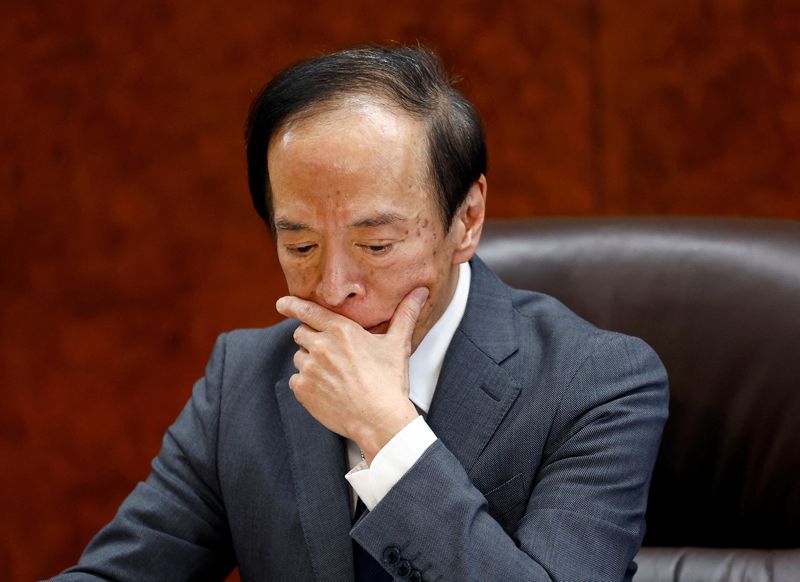By Leika Kihara
TOKYO (Reuters) -One of Bank of Japan Governor Kazuo Ueda's biggest challenges will be to phase out a controversial yield curve control policy, which is criticised for distorting markets by keeping long-term interest rates low despite creeping inflation.
While Ueda has stressed the BOJ will be in no rush to dial back stimulus, the central bank is dropping clues on possible triggers of a policy shift.
Below are the options the BOJ could take in ending yield curve control (YCC), which applies a -0.1% rate to some funds parked with the central bank and targets the 10-year government bond in a range around zero, and triggers for action.
ABANDON OR TWEAK YIELD TARGET
In ending YCC, the first step will be to abandon or modify the 10-year yield target. Ueda has said YCC was unsuited for minor fine-tuning, suggesting he could abandon the yield cap and shift to a policy solely targeting short-term rates.
In doing so, the BOJ could soothe markets by pledging to buy as many bonds as needed to fend off an abrupt spike in yields.
If the BOJ feels abandoning the yield cap could be too risky given the market impact, it may take a more measured approach.
One idea would be to widen the band around the yield target, now set at 50 basis points on either side. Doing so could ease market distortions by allowing yields to move more freely.
Another option would be to target shorter-duration bond yields such as the five-year zone, to allow the longer end of the curve to better reflect economic fundamentals.
With the BOJ owning half the Japanese government bond (JGB) market, such moves likely won't trigger a big, lasting spike in borrowing costs that would severely hurt the economy.
But BOJ officials worry about the hit to consumers and companies, who have become long accustomed to ultra-low rates.
Many of them prefer to wait at least until the BOJ's October or December meetings to scrutinise corporate earnings and the degree of a global slowdown, for clues on whether Japan's wages and economy can continue to strengthen next year.
TWEAKING FORWARD GUIDANCE
Before tweaking the yield cap, the BOJ could drop more hints of a policy shift such as by modifying forward guidance.
Ueda may issue stronger warnings on the risk of an inflation overshoot, ditching his view the current, cost-driven inflation will slow below the BOJ's 2% target later this year.
Big upward revisions to its inflation forecasts at a July quarterly review would signal the BOJ's conviction that conditions for a policy shift are falling into place.
While the wage outlook is crucial to the timing of a policy shift, the BOJ is already signalling that Japan's prolonged era of nascent wage growth may be ending.
In an academic paper issued on May 22, the BOJ said inflation and wage growth could accelerate abruptly once costs exceed a certain threshold - and that once wages begin to rise, the trend could persist. Such academic papers can provide a theoretical backbone of future policy changes.
END NEGATIVE RATES
The BOJ could abandon the 0.1% charge applied to a portion of excess reserves financial institutions park with the central bank. It could then mop up liquidity from markets and start raising short-term rates. The move will ease the pain on commercial banks, which have seen margins crushed by years of ultra-low rates.

But the threshold would be higher than that for tweaking the 10-year yield cap, as it would cool the economy by increasing rates for bank lending and mortgage loans.
The BOJ would likely wait until there is evidence Japan can sustain a positive cycle, in which rising prices generate higher pay that gives households more purchasing power. A hike in short-term rates would thus come well after an end to the yield target.